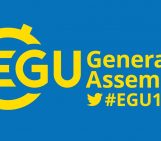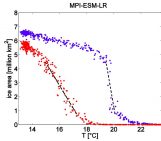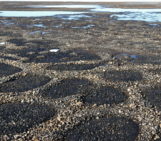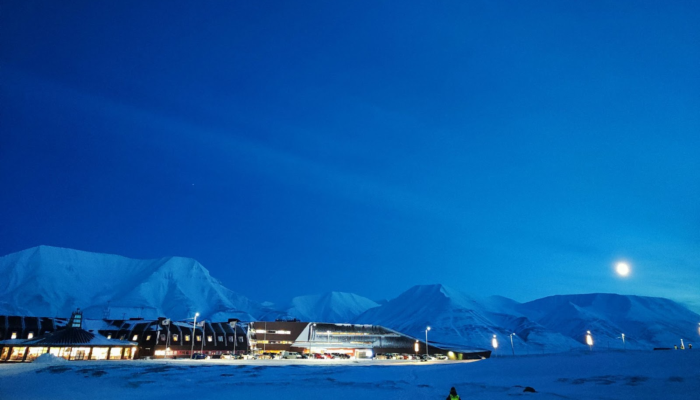
In the early days of 2023, nearly 100 researchers gathered in Longyearbyen, Svalbard, one of the last permanently inhabited places before reaching the North Pole (see my previous blogpost about Svalbard). The Svalbard Integrated Arctic Earth Observing System (SIOS) held its fifth Polar Night Week. SIOS is an international partnership of research institutions that study the environment and climate in and around Svalbard. This annual meeting brings the SIOS community together for science seminars, working group meetings, dedicated keynote talks, and plenary discussions. Let us take you with us deep into the polar night.
Journey to the Frozen North
Planes take off into the frozen air between snowflakes and other passengers. The airport lights are reflected on the crystals. In the queue to board the plane, many faces are familiar. Flights to Longyearbyen have the distinction of being meeting places. Tourists, workers and scientists come together. Some students also come to start their semester at UNIS, the world’s northernmost university centre.
Before reaching Svalbard, we fly over the frozen lakes and forests of central Norway before stopping in Tromsø. Here you can literally feel the Arctic for the first time: cold temperatures, strong winds and light snow. The Atlantic coastline is cut by long fjords and the mountains along them have long striations. It is as if they have been sculpted by a force that has now disappeared. During the last ice age, about 20,000 years ago, the entire region was covered by layers of ice hundreds of meters thick. The glaciers, under their own weight and slow movement, carved out the rock to create these spectacular reliefs. The clock is ticking, night is trying to give way to day but our plane seems to be running away from the sunrise. We plunge into the polar night.
Longyearbyen, where Svalbard Meets the World (and the climate change)
In Svalbard, an archipelago near the North Pole, the sun disappears in November and returns in February. Then, in a few weeks, it rises and does not set again until the end of August. This place on the edge of reality has become an outpost for the study of climate change. In the Arctic, warming is almost four times greater than on a global scale – a phenomenon known as ‘Arctic amplification’ – and Svalbard is the fastest warming place on our planet. The ice- lbedo feedback is among the physical processes that explain this. The latter is the darkening of the ocean and land due to reduced sea ice and snow cover, which in turn increases the surface temperature and promotes ice melting (see here a nice blogpost about this). The strength of climate change in the Arctic is a kind of window into our
near future.
At the same time, the Arctic is home to our memory. The Svalbard Global Seed Vault , located near Longyearbyen, safeguards duplicates of seeds from around the world, securing the world’s future food supply. Next to the seed vault is Gruve 3/Mine 3, which houses the Arctic World Archive , which preserves cultural heritage of historical sites from many parts of our planet in a digital form. That is why Longyearbyen is such a unique place. That is why so many scientists come here.
Most people here know each other, whether it’s after a few weeks on the glaciers, a party in the only bar in Ny Ålesund or a discussion about the behaviour of queens. It’s like a small village at Christmas time. A bit like a big family, where distant cousins only see each other from time to time, but where the reunion is always full of joy. This is how the Polar Night week begins.
The Polar Night Week
Since 2018, SIOS has been holding its annual meeting in January. The Polar Night Week aims to be a space for exchange, reflection and planning of future activities and creates a dynamic atmosphere to foster partnerships and cooperation between its international visitors. The week starts with an ice-breaker event, where a summary of chapters from the new edition of the State of Environmental Science in Svalbard (SESS) report alternates with musical interludes performed by Longyearbyen residents. The music alternates with thematic chapters, ranging from the properties of snow to the effect of solar activity on different atmospheric layers.

Sara Aparicio, ECR observer in charge of SIOS communication, and William Harcourt, ECR observer, during the Polar Night Week. Credit: U. Nanni.
What is exactly SIOS?
This is the million-dollar question.
The formal answer would be that SIOS is an interdisciplinary community of researchers, industry professionals and policy makers striving to develop Svalbard science through observation. Its mission is to develop an effective observing system, share technology, experience and data, fill knowledge gaps and reduce the environmental footprint of science. You’ll have no trouble making the connection to your own work. From the logistics of navigation to the complex processes that shape the landscape, SIOS seeks to bridge the gaps between spheres of work to ensure that Svalbard remains one of the world’s last great wilderness areas. The SIOS Knowledge Centre (SIOS-KC), based in Longyearbyen, is the central hub of SIOS. Members of the SIOS community can use various services offered by SIOS-KC with the support of the working groups.
The unofficial answer would be that it truly depends. It can be a data hub, a service, a place to access research infrastructure and logistical support, a community, an enabler of fieldwork and the core of Svalbard research. Whatever it may be, we are sure SIOS has something to offer.
In addition, SIOS offers tailor-made training courses each year for researchers, engineers, technicians, staff and PhD students. One example is the annual SIOS training course on remote sensing. In 2022, this course focused on applications of artificial intelligence in Svalbard, while the upcoming course in 2023 will focus on drones in Svalbard. If you want to know more about the next course, keep an eye on the SIOS twitter channel, as the opening of applications will be announced there.
Why a Polar Night Week?
Getting back to why we are in Longyearbyen, the Polar Night week brings the SIOS community together for scientific seminars, working group meetings and plenary discussions. The aim of the meeting is to develop links within the Svalbard scientific community and to coordinate research across international boundaries. Support and advice is offered by SIOS and its experienced team. Together, the Polar Night Week enables the SIOS community to adopt the language of science and work together to build a sustainable observing system for the planet. During the breakout sessions where participants were divided, ideas were formulated on how SIOS can improve in the future with its member institutions.
Why has it been important for us?
Of the 90 participants, 25 identified themselves as early career researchers (ECR). For most of us, the period of the COVID-19 pandemic represented half of our time in academia, for some all of it. Some of us were expected to do fieldwork in the Arctic, but now that the restrictions are easing, our PhD careers are over. This Polar Night Week meeting was a great opportunity to (re)connect with a community that has been torn apart in recent years. This feeling of not being alone in one’s own institute, but being connected to others is a great strength for successful research.
The theme of the conference – conducting research in Svalbard – and its size – not too big, not too small – were perfect for ECRs looking for an opportunity to talk about multidisciplinary research in Svalbard in a friendly environment. And, honestly, attending a conference where participants walk barefoot, or on flip-flops or slippers, is a once-in-a-lifetime experience! What a better way to get together than to meet the ECRs working on topics related to the Arctic in the Arctic itself?
ECRs have been involved as ECR observers in SIOS working groups or as members of the editorial board of the SESS report, as well as the ECRs who have received SIOS’ ECR awards. These ECRs have had the opportunity to introduce themselves and to share their work with the rest of the attendees. What is more, all ECRs attending the Polar Night Week were invited to an ECR networking event and were encouraged to participate in a meeting to discuss the possibility of creating a Svalbard-centered ECR network as well as conducting citizen science. The Remote Sensing Working Group looks forward to engaging one more observer in 2023. Stay tuned to SIOS social media channels.
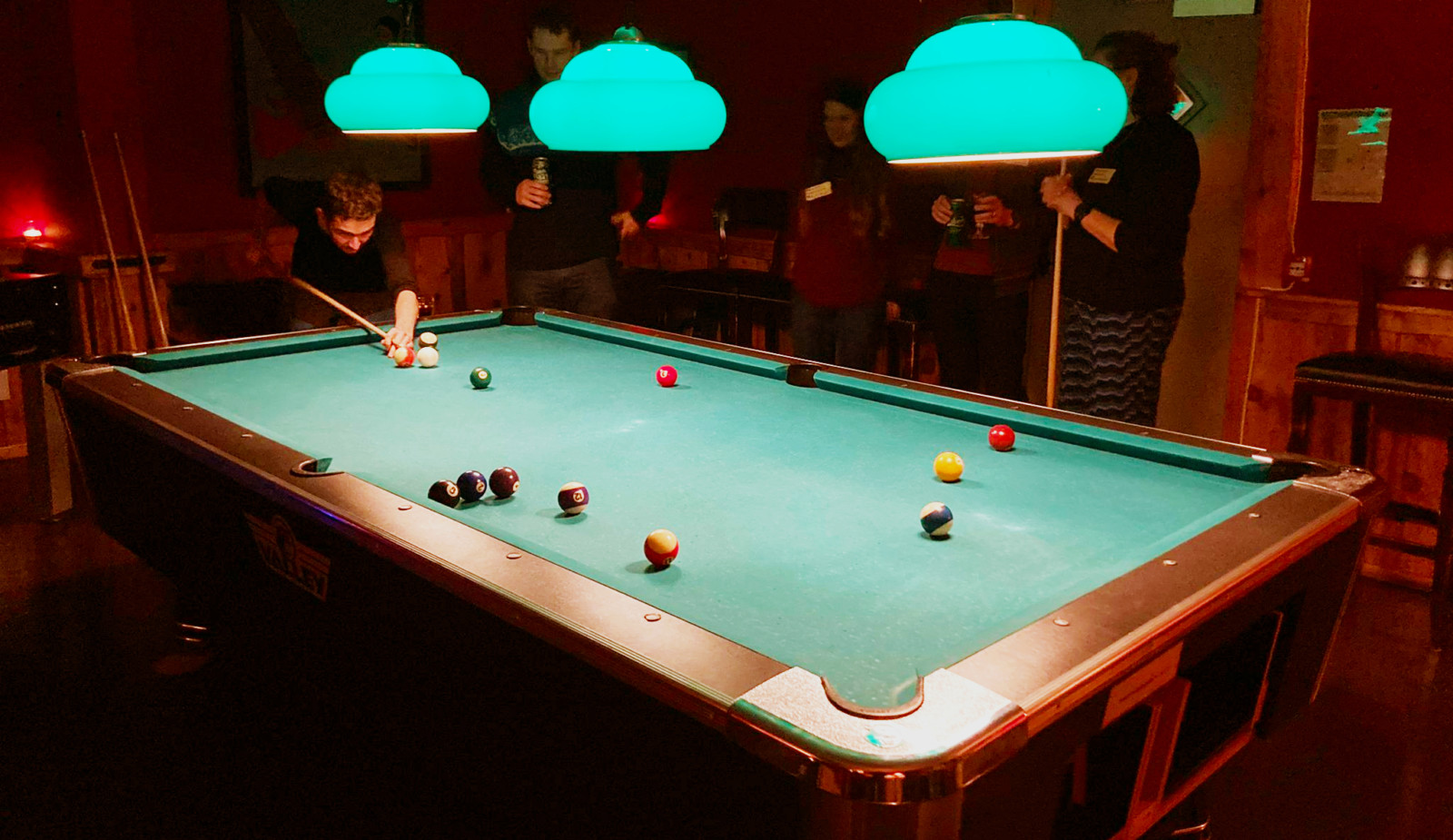
Social events haveb een key for the early career scientists to meet senior researchers in an informal environment. Credit: W. Harcourt.
This conference was an opportunity for some of us to discover the enormous possibilities of working here. SIOS offers great support to those who would like to come and work in the Arctic but don’t have a local connection, as well as to those who are used to working there but want to broaden their vision. Of course, this information is readily available online, but as one of the board members said, “We are overloaded with information, what we need is communication”. Once everyone is back at their own institute, it is much easier to engage in virtual conversations and to keep the conversation going.
During the Polar Night week, we had the opportunity not only to experience daily life in the Arctic during the polar night, but also to go into the field with great scientists. Andy Hodson and his colleague Dimitri Kalenichenko explained to us how methane is produced in the subsurface of Arctic soils. They are measuring its evolution, the associated ecosystem and are also collaborating with space agencies to look for biological signatures in the moons of Jupiter. Being able to see this, to core the ice in the polar wind and see the little blue flame of methane burning on the surface of the snow really showed us the work that goes into a data point, into a scientific study. By combining field measurements, large-scale observations and modelling, we can gain a more comprehensive
understanding of our environment.
And for that, we need to meet and experience each other’s reality.
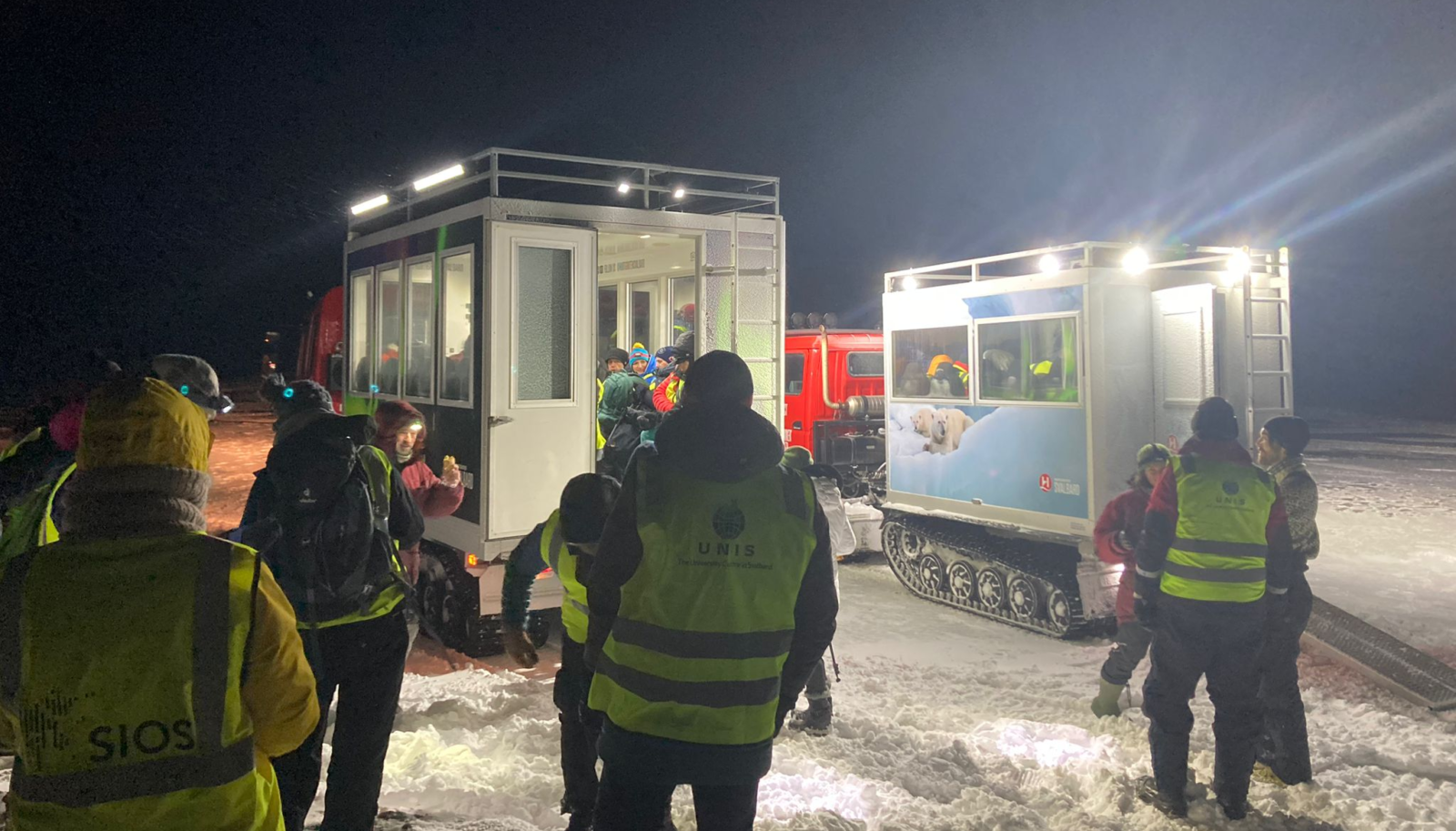
What a better way to experience the Arctic and build your network than going out at the edge of the sea ice in the middle of the polar night? Credit: W. Harcourt.
For the next Polar Night Week, the conference could be followed by a week-long training course in the field, as some researchers do not have this kind of opportunity at home. So why not transform the Polar Night Week into a Polar Night Fortnight?
Further reading
- The website of SIOS: https://sios-svalbard.org/
- The website of the University Centre in Svalbard, where you can find information study and research opportunities: https://www.unis.no/
- A guide for researchers in Svalbard: https://www.sysselmesteren.no/en/researchers/guidelines-for-
researchers-in-svalbard/ - A blog post about conducting interdisciplinary research in the Arctic: “The Global Arctic, a personal perspective on interdisciplinary research“
- A blog post to find your way in the cryo-community: “A little guide to find your way through the Cryo-Jungle?“
Edited by David Docquier and Giovanni Baccolo
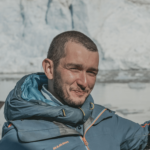 Ugo Nanni is a postdoctoral researcher at the University of Oslo. From the Alps to the Arctic, he listens to the whisper of glaciers . When he is not conducting research, he shares the voice of glaciers and tells their story beyond the academic world, as he did at the Cryosphere Pavilion during the COP27. Ugo is also on Twitter (@NanniUgo) and you can contact him at ugo.nanni@geo.uio.no
Ugo Nanni is a postdoctoral researcher at the University of Oslo. From the Alps to the Arctic, he listens to the whisper of glaciers . When he is not conducting research, he shares the voice of glaciers and tells their story beyond the academic world, as he did at the Cryosphere Pavilion during the COP27. Ugo is also on Twitter (@NanniUgo) and you can contact him at ugo.nanni@geo.uio.no

